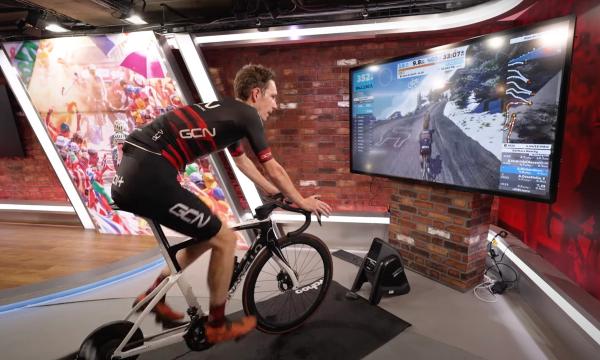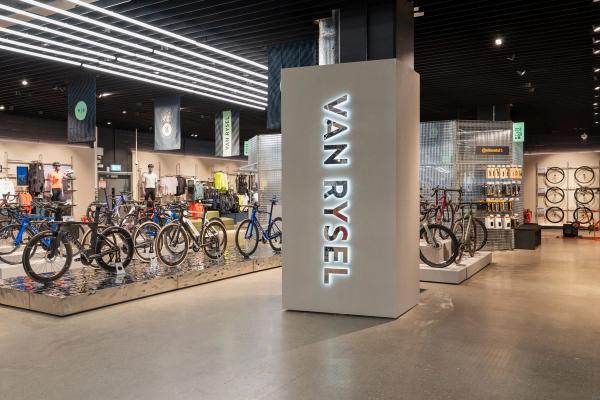Can I use my road bike off road, Q factor and sunscreen: GCN Tech Clinic
Your latest bike tech questions answered by the GCN Tech team in this week’s instalment of the Tech Clinic
Alex Hunt
Junior Tech Writer
The dream team are reunited this week as Alex Paton and Ollie Bridgewood take a look over some of your latest bike and maintenance-related questions. Remarkably there are no questions about chain waxing this week, instead, the guys shine some light on thru-axle conversions, road bike to gravel bike conversions and more.
Can I convert a bike with quick-release to thru-axles?
Converting your frame and fork to accept thru-axles is never advised. In most cases it isn’t possible and any attempts could cause damage to the frame. All hope is not lost, however, as most wheel manufacturers will also produce axle adapters for the wheels. These are replaceable end caps that can alter the width and size of the hubs to make them compatible with different axle types.
If you are still looking for a wheelset that is not specifically quick-release then trying a brand that offers axle adapters is a cheap and safe workaround.
Is it better to use pedals with a wider Q Factor as standard or use an extender adapter?
Most brands do offer a range of spindle lengths to accommodate the needs of riders looking for a specific Q Factor. These might not be so readily available and might need to be ordered specifically from a supplier or manufacturer, Shimano, Speedplay and many others all offer various spindle lengths.
We would always suggest this as the preferred solution however extenders can be used as an option if the specific pedals or Q Factor is not available. These do introduce another component so it is worth regularly checking the torque of both the pedals into the adapter and the adapter into the crank.
What is the best practice for stripping a bike down with internal cable routing?
If you are stripping a frame down that you know is going to be rebuilt you can save yourself a lot of time and frustration by properly removing the internal cables. Instead of just removing the cables and dealing with the hassle of refitting them later on it is good practice to sleeve the cables.
This involves using some plastic sleeving that’s similar to heat shrink to slide over the cables before they are removed from the frame. By sliding the plastic sleeving over the cables this will remain in place when you remove the cables from the frame. It is a good idea to fix these in place with some tape so that they don’t fall out. When the time comes to refit the cables they will slide through the sleeves back into their original place.
If this isn’t possible for whatever reason or if you send your frame off for repair and it comes back without the guiding sleeve, the best course of action is to use a specific cable routing kit. This will normally make use of magnets and picks to help guide your cables through your frame. This can be fiddly work, however, the best time to do it is when the frame is bare as it gives you the most freedom and accessibility to position the frame in a conducive way for routing the cables.
Can I use my road bike as a cyclo-cross/ gravel bike if I fit 33mm tyres?
In dry conditions fitting wider tyres to your road bike will make it more capable and allow you to ride on unpaved roads and enter cyclo-cross races. There will be some differences between using a road bike and a gravel or cyclo-cross-specific bike in the ride characteristics as they have different geometry, but for the most part it will be a sufficient hack to prevent the need for a separate bike.
Nevertheless, the issues will begin to come thick and fast as soon as conditions get wet and muddy. Although a road bike might have the frame clearance for wider tyres it almost certainly doesn’t have the mud clearance. This means that especially in cyclo-cross it will not take long for the frame to clog up with mud and for the wheels to struggle to fit through the frame.
If you do intend to ride your road bike off-road with wider tyres, consider fitting some sort of clear plastic frame protection to the inside of your fork legs to prevent any mud or dirt from scratching the paint or damaging the structure of the fork. With the narrower clearances of a road frame, the chances of impacts from debris are far higher.
Can my partner and I use a bike that is in between our specific frame sizes on the indoor trainer to save swapping bikes every time?
This depends largely on the size difference between you and your partner. If you only need to use a frame size that is either one size too big or too small then you should be able to make things work. Although neither of you will have your ideal setup, if it means that you can ride indoors when you otherwise couldn’t then it is a good idea!
If you need to make a drastic change in frame size to make things work then this solution simply isn’t viable and you’d be better off changing your bikes over on the indoor trainer. The issue isn’t really with the actual process of swapping the bikes over as this should be pretty straightforward with a bit of practice. The more time-consuming issue comes if your bikes use different speed cassettes. This does require you to swap the cassettes over to match the bike and unless you decide to match groupsets or acquire a second trainer, is an unavoidable part of the process.
How well do marine-safe sunscreens handle high-sweat environments?
A lot of common sunscreens are pretty harmful to marine life and have recently been potentially attributed to certain types of cancer. This is because of one of the chemicals commonly found in sunscreens, Octocrylene. Some sunscreens replace this with titanium dioxide which acts as a barrier to harmful UV rays.
The chemical composition of the sunscreen has less effect on how well it works in a high-sweat environment instead the carrying agent is more the determining factor. Cream-based sunscreen can have a detrimental effect on performance as it can hinder cooling by blocking the pores of the skin preventing perspiration. The best sunscreen to use for cyclists is an alcohol-based one. This applies UV protection with the alcohol-carrying agent then evaporates leaving your pores clear to help keep your body cool.
If you have any tech-related questions that you need answering, head over to this week’s Tech Clinic video on the GCN Tech YouTube channel and add your question to the comments along with #ASKGCNTECH. Or leave your question in the comments below.









.jpg?w=600&auto=format)

